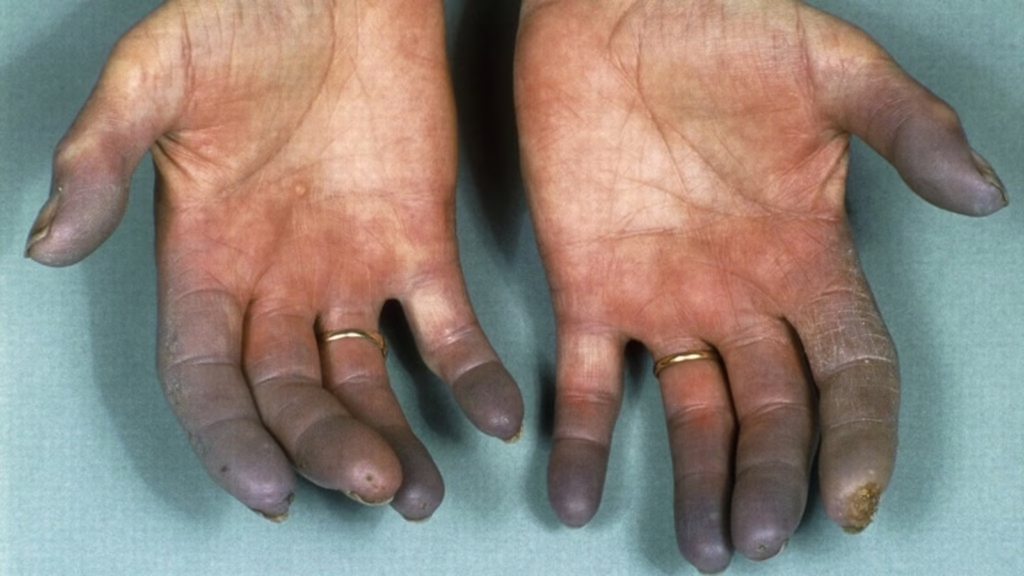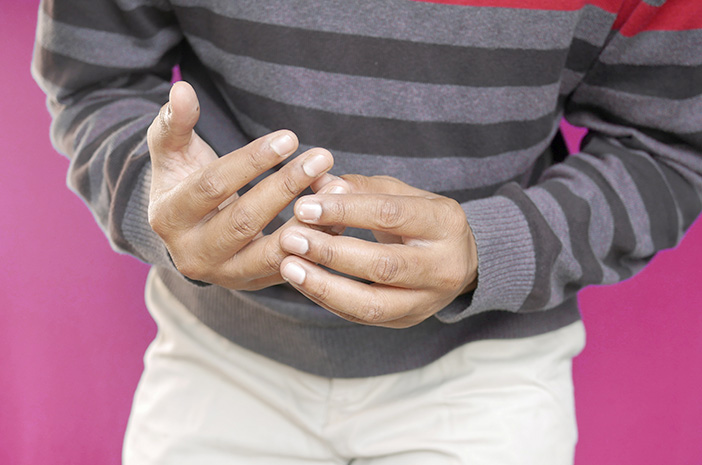Buerger’s Disease is suddenly becoming a hot topic across the Kingdom. Over the past few weeks, thousands of people have been searching online for information about this rare vascular condition. But what exactly is Buerger’s Disease, who is at risk, and why is awareness rising now?
Buerger’s Disease, also called thromboangiitis obliterans, is an inflammatory condition affecting small and medium-sized arteries and veins, mainly in the hands and feet. It causes blood vessels to swell and form clots, reducing blood flow to the extremities. If untreated, it can lead to tissue damage and, in severe cases, amputation.
Buerger’s Disease, also known as thromboangiitis obliterans, is an inflammatory disease that affects small and medium-sized arteries and veins, primarily in the hands and feet. The inflammation can block blood flow, leading to pain, ulcers, and, in severe cases, amputation.
While Buerger’s Disease is uncommon, recent attention has highlighted its connection to tobacco use and the importance of early detection. Understanding this condition is critical for preventing severe complications.
What Is Buerger’s Disease?
Buerger’s Disease most often affects young men under the age of 45, though women can also develop it. The main risk factor is tobacco use—smoking or chewing. Tobacco triggers an abnormal immune reaction that inflames the blood vessels, causing blockages.
Although rare, early diagnosis is critical. If identified early, lifestyle changes and treatment can prevent severe complications.
Symptoms of Buerger’s Disease
Recognizing symptoms can save lives and limbs. Common signs include:
- Persistent pain in hands and feet, often worsening at rest.
- Cold fingers or toes due to poor circulation.
- Color changes in the skin, such as redness or blue/pale discoloration.
- Sores or ulcers on fingers or toes that heal slowly.
- Gangrene in severe cases, possibly requiring amputation.
Early medical consultation is essential for anyone experiencing these symptoms.
Why Is Interest Surging Now?
Several factors have contributed to the sudden spike in attention toward in the Kingdom.
1. Public Health Awareness Campaigns
Health authorities have launched campaigns highlighting the dangers of smoking and tobacco use. Many of these campaigns specifically mention Buerger’s Disease, emphasizing how preventable it is if tobacco use is avoided. By sharing stories and statistics, authorities hope to encourage healthier lifestyles.
2. Media Coverage
Recent news reports have featured real-life cases of individuals affected by Buerger’s Disease. Stories of young adults who lost fingers or toes due to late diagnosis have captured public interest, sparking discussions across online platforms.
3. Social Media Influence
Social media has amplified awareness, with health influencers and advocacy groups sharing posts about the disease. Short videos, personal stories, and infographics explaining symptoms and preventive measures have gone viral, increasing curiosity and searches.
Risk Factors and Causes
It has several risk factors, the most significant being tobacco use. Other contributing factors may include:
- Genetic predisposition: Certain individuals may be more susceptible due to family history.
- Environmental exposure: Chemicals, heavy metals, or repeated cold exposure may trigger symptoms.
- Gender and age: Men under 45 are most commonly affected, though women can also develop the disease.
Avoiding tobacco completely is the single most effective preventive step.
How Is Buerger’s Disease Diagnosed?
Diagnosis typically involves:
- Medical history review: Doctors assess smoking habits, symptoms, and family history.
- Physical examination: Skin changes, ulcers, and pulse strength are checked.
- Imaging tests: Angiography, ultrasound, or MRI may reveal blocked or inflamed vessels.
- Exclusion of other conditions: Doctors rule out diabetes, autoimmune disorders, or other vascular diseases.
Early diagnosis can significantly improve treatment outcomes.
Treatment and Management
There is no cure, but proper management can prevent progression and complications. Treatment focuses on:
- Quitting tobacco: Complete cessation is essential to stop disease progression.
- Medications: Drugs may improve blood flow, reduce clotting, and manage pain.
- Wound care: Ulcers and sores must be treated promptly to prevent infection.
- Surgery: In severe cases, amputation may be necessary, but bypass surgery can restore blood flow in some patients.
Lifestyle changes, including regular exercise and protecting extremities from cold, are also beneficial.

Preventing Buerger’s Disease
Awareness and prevention are key. Steps to reduce risk include:
- Avoid all forms of tobacco.
- Seek medical advice at the first sign of pain or skin changes.
- Maintain good circulation through regular exercise.
- Protect hands and feet from cold exposure.
- Follow healthy lifestyle practices, including a balanced diet.
Conclusion
The surge in interest in Buerger’s Disease reflects the Kingdom’s growing awareness of health issues linked to lifestyle choices. Understanding the disease, recognizing early symptoms, and avoiding tobacco can prevent serious complications. Public health campaigns, social media awareness, and media coverage have all played a role in educating the population.
By staying informed and proactive, individuals can protect their limbs and overall health. Buerger’s Disease may be rare, but it is preventable and manageable with timely intervention and healthy choices.
Do follow us: Instagram
Read More: Qatar Asks Hamas Leaders to Leave Following U.S. Pressure



